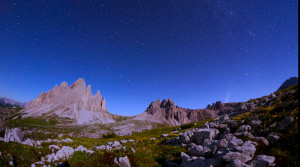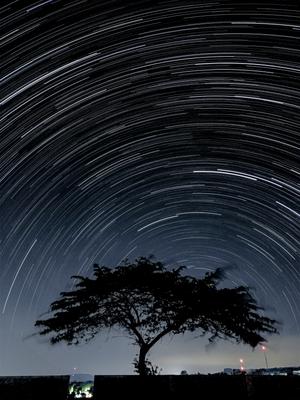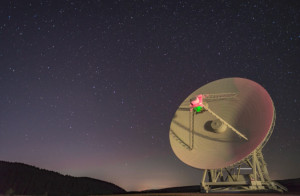Glossary term: Pôle céleste
Description: Les pôles Nord et Sud célestes correspondent aux points d'intersection de la sphère céleste avec l'axe de rotation de la Terre.
Au pôle Nord de la Terre, le pôle Nord céleste est toujours directement au-dessus de la Terre et au pôle Sud de la Terre, le pôle Sud céleste est toujours directement au-dessus de la Terre. En raison de la rotation de la Terre, le ciel de l'hémisphère nord semble tourner autour du pôle nord céleste et le ciel de l'hémisphère sud semble tourner autour du pôle sud céleste. Le pôle Nord céleste se trouve à une déclinaison de +90 degrés et le pôle Sud céleste à une déclinaison de -90 degrés.
Related Terms:
See this term in other languages
Term and definition status: The original definition of this term in English have been approved by a research astronomer and a teacher The translation of this term and its definition is still awaiting approval
The OAE Multilingual Glossary is a project of the IAU Office of Astronomy for Education (OAE) in collaboration with the IAU Office of Astronomy Outreach (OAO). The terms and definitions were chosen, written and reviewed by a collective effort from the OAE, the OAE Centers and Nodes, the OAE National Astronomy Education Coordinators (NAECs) and other volunteers. You can find a full list of credits here. All glossary terms and their definitions are released under a Creative Commons CC BY-4.0 license and should be credited to "IAU OAE".
If you notice a factual or translation error in this glossary term or definition then please get in touch.
Related Media
Big Dipper and Comet Neowise C2020 F3
Credit: Giorgia Hofer/IAU OAE (CC BY 4.0)
License: CC-BY-4.0 Creative Commons Attribution 4.0 International (CC BY 4.0) icons
Trajectoire apparente des étoiles dans l'hémisphère sud avec pollution lumineuse à un niveau 4 sur l'échelle de Bortle
Credit: Slamat Riyadi/UAI OAE (CC BY 4.0)
License: CC-BY-4.0 Creative Commons Attribution 4.0 International (CC BY 4.0) icons
Southern Sky Over La Silla
Credit: José Rodrigues/IAU OAE (CC BY 4.0)
License: CC-BY-4.0 Creative Commons Attribution 4.0 International (CC BY 4.0) icons
Beautiful Night in the Atacama Desert
Credit: Uwe Reichert/IAU OAE (CC BY 4.0)
License: CC-BY-4.0 Creative Commons Attribution 4.0 International (CC BY 4.0) icons
The Big Dipper with the Sardinia Radio Telescope SRT
Credit: Antonio Finazzi/IAU OAE (CC BY 4.0)
License: CC-BY-4.0 Creative Commons Attribution 4.0 International (CC BY 4.0) icons













